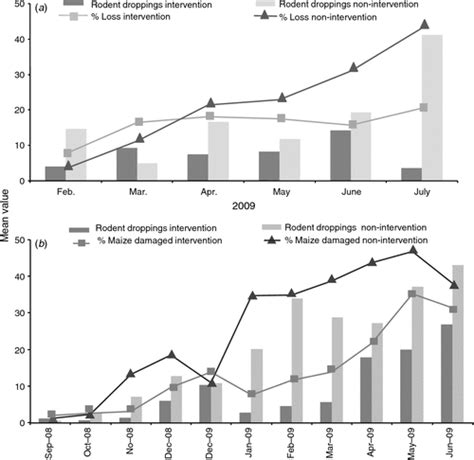Intro
Discover 5 ways a low sed rate affects health, including inflammation, infection, and autoimmune disease risks, and learn how to manage sed rate for overall well-being.
Erythrocyte sedimentation rate, commonly referred to as ESR or sed rate, is a blood test that measures how quickly erythrocytes (red blood cells) settle at the bottom of a test tube containing a blood sample. It indirectly measures how much inflammation is in the body. A low sed rate indicates a slower rate of settling, which can be associated with various conditions, some of which might require medical attention. Understanding the implications of a low sed rate can help individuals better navigate their health and seek appropriate care when necessary.
The sed rate is a non-specific measure of inflammation, meaning it can be elevated in numerous conditions, including infections, autoimmune diseases, and cancers. Conversely, a low ESR can also have several explanations, ranging from technical issues with the test to specific health conditions. For instance, a very low ESR might be seen in conditions where the red blood cells are abnormal in shape or size, affecting their ability to settle.
In clinical practice, the ESR is often used in conjunction with other tests to help diagnose and monitor various diseases. It's essential for patients to discuss their ESR results with their healthcare provider, as the implications of a low or high ESR can vary significantly depending on the individual's overall health context. This discussion can help clarify whether a low sed rate is a cause for concern or simply a benign finding.
Understanding Low Sed Rate

A low sed rate can be due to several factors, including technical issues with the blood sample or the test itself, certain properties of the red blood cells, or specific health conditions. For example, in conditions where red blood cells are abnormally shaped, such as in sickle cell disease, they may not stack together properly, leading to a decreased sedimentation rate. Similarly, conditions that increase the concentration of certain proteins in the blood can also affect the ESR.
Factors Influencing ESR
Some key factors that can influence ESR include age, gender, and the presence of inflammatory conditions. Generally, ESR increases with age and is slightly higher in women than in men. However, these are general trends, and individual results must be interpreted in the context of the person's overall health.Causes of Low Sed Rate

There are several causes of a low sed rate, including:
- Polycythemia: A condition characterized by an excessive number of red blood cells, which can decrease the sedimentation rate.
- Sickle Cell Disease: The abnormal shape of red blood cells in this condition can affect how they settle.
- High Blood Viscosity: Conditions that increase blood thickness can slow down the settling of red blood cells.
- Technical Issues: Problems with the blood sample, such as hemolysis (breakdown of red blood cells), can lead to inaccurate results.
Implications of Low Sed Rate
A low sed rate can have various implications, depending on the underlying cause. In some cases, it may not be a cause for concern, while in others, it could indicate an underlying condition that requires medical evaluation. It's crucial for individuals with a low sed rate to discuss their results with a healthcare provider to determine the appropriate course of action.Diagnosis and Monitoring

Diagnosing the cause of a low sed rate involves a combination of clinical evaluation, laboratory tests, and sometimes imaging studies. The healthcare provider will consider the patient's symptoms, medical history, and the results of other tests to determine the underlying cause. Monitoring may involve repeating the ESR test, performing other blood tests, or conducting physical examinations to assess for signs of underlying conditions.
Role of ESR in Disease Monitoring
ESR can play a significant role in monitoring certain diseases, especially those characterized by inflammation. For conditions like rheumatoid arthritis or lupus, changes in ESR can reflect the level of disease activity and response to treatment. A low sed rate in these contexts might indicate well-controlled disease or, conversely, could suggest the presence of a condition affecting red blood cell settling.Treatment and Management

The treatment and management of a low sed rate depend entirely on the underlying cause. If the low ESR is due to a technical issue, the test may simply need to be repeated. For conditions like polycythemia or sickle cell disease, management involves treating the underlying condition, which may include medications, lifestyle changes, or other interventions.
Importance of Follow-Up
Follow-up care is crucial for individuals with a low sed rate, especially if the cause is related to an underlying health condition. Regular check-ups with a healthcare provider can help monitor the condition, adjust treatment as necessary, and prevent potential complications.Prevention Strategies

While not all causes of a low sed rate can be prevented, maintaining overall health through a balanced diet, regular exercise, not smoking, and managing chronic conditions can help reduce the risk of developing certain underlying conditions that might affect ESR.
Lifestyle Modifications
Lifestyle modifications, such as improving diet, increasing physical activity, and managing stress, can contribute to overall health and may indirectly influence ESR by reducing inflammation and improving blood health.Future Directions

Research into the causes and implications of low sed rates continues to evolve. Future studies may uncover new conditions associated with low ESR or develop more precise methods for measuring inflammation and monitoring disease activity.
Advancements in Diagnostic Techniques
Advancements in diagnostic techniques, including more sensitive and specific tests for inflammation, may reduce the reliance on ESR in the future. However, until then, understanding the significance of a low sed rate remains an important aspect of patient care.In conclusion, a low sed rate can have various implications, ranging from benign technical issues to indicators of underlying health conditions. By understanding the causes, diagnosis, and management of low sed rates, individuals can better navigate their health and work closely with their healthcare providers to address any concerns.
What does a low sed rate indicate?
+A low sed rate can indicate several conditions, including technical issues with the test, certain properties of red blood cells, or specific health conditions like polycythemia or sickle cell disease.
How is a low sed rate diagnosed?
+Diagnosing the cause of a low sed rate involves clinical evaluation, laboratory tests, and sometimes imaging studies to determine the underlying cause.
What are the implications of a low sed rate for overall health?
+The implications can vary widely depending on the cause. In some cases, a low sed rate may not be a cause for concern, while in others, it could indicate an underlying condition that requires medical attention.
We invite readers to share their thoughts and questions about low sed rates in the comments below. For those seeking more information, we encourage exploring reputable health resources and consulting with healthcare professionals for personalized advice. By engaging in open discussions and staying informed, we can better understand the complexities of health indicators like the sed rate and work towards improved well-being.
